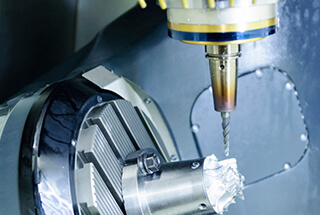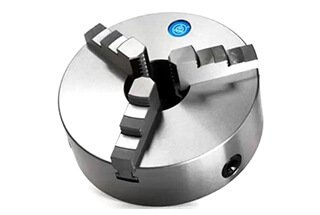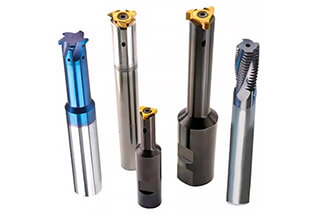1. SMTCL
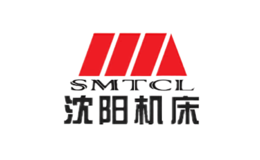
Shenyang Machine Tool, established in 1993, is a trailblazer in the machine tool industry, with a rich history dating back to its roots in 1933. As a union of four foundational companies, including the pioneering Shenyang First Machine Tool Factory, it stands today as a publicly traded company on the Shenzhen Stock Exchange, bearing the stock code 000410.
This company has carved a niche for itself as a leading manufacturer of high-precision, durable machine tools, including a variety of lathes and machining centers. Their product range, celebrated for its exceptional quality, caters to diverse machining needs, offering horizontal and vertical lathes, gantry machining centers, and more.
Shenyang Machine Tool’s commitment to innovation is evident in its adoption of new technologies and materials, particularly since 2010. A notable advancement is the use of the LZA4205 microcrystalline alloy in their CNC turrets, replacing traditional materials to achieve higher quality and efficiency, thereby enhancing their market competitiveness.
Apart from its manufacturing excellence, the company is a comprehensive service provider in the field of SMTCL lathe machine spare parts. It offers an all-encompassing range of services, including sales, maintenance, consulting, and training. Their expertise ensures that customers receive not only top-notch products but also exceptional support and guidance in selecting and using machine tool parts.
Further solidifying its status in the industry, Shenyang Machine Tool plays a pivotal role in the Shenyang CNC Machine Tool Industrial Park. This hub, comprising nine major enterprises, represents a significant step in the company’s journey towards becoming a global leader in CNC machine tool manufacturing. Through specialized restructuring and innovative practices, Shenyang Machine Tool is setting new standards in the industry, dedicated to delivering quality and value to customers worldwide.
2. DMTG

Shenyang Machine Tool established in 1993 through the merger of four leading companies, has risen to become a prominent figure in the machine tool industry. As a subsidiary of the larger Shenyang Machine Tool (Group) Co., Ltd., this company is renowned for its exceptional quality and comprehensive range of products, including horizontal lathes, gantry machining centers, horizontal milling and boring centers, and vertical machining centers. With a history dating back to 1933, it stands as one of China’s largest and most respected lathe manufacturing bases.
After going public in 1996 and being listed on the Shenzhen Stock Exchange with the stock code 000410, the company has consistently focused on innovation and quality. By embracing new technologies and materials, such as the successful substitution of the LZA4205 microcrystalline alloy for the traditional ZQSn6-6-3 brass in its CNC turret branch, Shenyang Machine Tool Part Co., Ltd. has not only improved the quality of its products but has also gained a competitive edge by effectively controlling costs.
The company’s commitment to excellence extends to its service offerings. It is a multifaceted service provider, adept in marketing and providing value-added services for SMTCL Shenyang machine tool products and CNC lathe machines. It offers a full spectrum of services including sales of complete spare parts, maintenance, overhaul, transformation, and processing of mechanical equipment, as well as consulting, technical training, and import-export trade. This is all part of their dedication to making the selection of machine tool spare parts easier and more efficient for their clientele.
In recent years, the Shenyang CNC Machine Tool Industrial Park has been relocated and restructured for specialization, housing nine enterprises that span the entire gamut of machine tool production. This strategic move has positioned the Industrial Park to become one of the largest and most modernized CNC machine tool manufacturing bases in the world.
Overall, Shenyang Machine Tool stands as a testament to China’s industrial prowess, with a steadfast approach to innovation, customer service, and global competitiveness. It continues to forge partnerships within the industry, aiming to serve customers better and enhance value in an ever-evolving market.
3. QCMTT
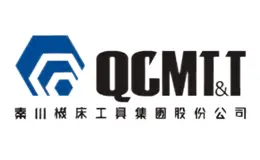
Founded in 1965, Qinchuan Machine Tool Group Co., Ltd. (stock code: 000837) is a leading integrator and key parts supplier in the high-end equipment manufacturing sector. As a pioneer in China’s machine tool industry, the company has established a robust manufacturing base for precision CNC machine tools and complex tools, as well as for industrial robot reducers. Qinchuan is recognized as a national high-tech enterprise and an innovative pilot enterprise.
Qinchuan’s product portfolio spans advanced CNC lathes, machining centers, cylindrical grinders, gear processing machine tools, thread grinders, and precision measuring instruments. Additionally, it offers high-end manufacturing products such as industrial robot reducers and specialty gearboxes, alongside components like rolling functional parts, auto parts, precision gears, instruments, and precision castings. The company is also at the forefront of intelligent manufacturing, providing smart machine tools, high-end CNC systems, automated production lines, digital workshops, and Qinchuan Cloud services, all powered by core CNC technologies.
With a strategic focus on “equipping China and reaching out to the world,” Qinchuan commits to spearheading high-end manufacturing and breaking through in intelligent manufacturing and CNC key technologies. The company actively undertakes significant national R&D projects and aims to become a world-class system integrator and supplier of key components in the high-end equipment manufacturing domain. Qinchuan’s dedication to innovation has earned it national accolades, including the China Famous Trademark for its “QINCHUAN” brand, demonstrating its leadership in originating critical core technologies for industrial machinery.
4. JIER
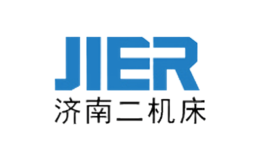
Established in 1937, Jinan Second Machine Tool Group Co., Ltd. has grown into a preeminent manufacturer of forging equipment and large-scale heavy metal cutting machine tools, boasting a diverse product line that includes forging equipment, CNC metal cutting machine tools, automation equipment, casting machinery, and CNC cutting equipment. Spanning over 1.23 million square meters and employing more than 5,000 skilled workers, this company has solidified its position as a backbone enterprise in China’s machine tool industry—recognized as one of the “Eighteen Arhats” factories.
Jinan Second Machine Tool Group has played a pioneering role in China’s industrial development, creating the nation’s first gantry planer and mechanical press in 1953 and 1955, respectively, and has since developed over 600 national first-set products, providing robust equipment support across various sectors. Their products are extensively used in industries like automotive, aerospace, rail transport, energy, shipbuilding, metallurgy, molds, and construction machinery, and are exported to 67 countries and regions worldwide.
As one of the world’s top three manufacturers of CNC stamping equipment, the company has been honored by the State Council for its significant contributions to the field of major technical equipment. It is also the largest and most comprehensive manufacturer of heavy metal cutting machine tools in China and one of the world’s biggest mechanical press manufacturers.
As a state-owned enterprise, Jinan Second Machine Tool Group offers pre-sales and after-sales service, equipment maintenance and modification, parts supply, and external collaboration for casting, forging, welding, and machining components. Their product range includes specifications from 60t to 5000t mechanical presses, multi-station presses, CNC bending machines, and a variety of CNC gantry milling and boring machines, among others. With a domestic market share of over 70% in large and heavy mechanical presses, the company is a crucial equipment provider for the automotive industry and other sectors, earning the title “Equipment Department of China’s Automotive Industry.” Since 1997, they have supplied numerous stamping production lines to world-renowned car companies and since 2001 have been exporting heavy mechanical presses with full intellectual property rights to the high-end American market.
5. Qizhong

Established in 1950, Qiqihar No.1 Machine Tool Factory, now known as Qiqihaer Heavy CNC Equipment Co., Ltd. (QHNC), stands as a prominent leader and backbone in China’s machine tool industry. Recognized by the Ministry of Industry and Information Technology as a specialized and innovative “Little Giant” enterprise, QHNC is a national industrial manufacturing icon for high-end heavy-duty CNC machine tools.
QHNC’s flagship products include vertical and horizontal lathes, dominating with a comprehensive portfolio that encompasses over 600 varieties across 10 major categories, including heavy-duty deep hole drilling and boring machines, roll lathes, and vertical grinding machines. These products have not only fulfilled domestic gaps but have also reached over 30 countries and regions, including Europe, America, Japan, and South Korea, establishing QHNC as a brand with significant impact.
QHNC is a national first-class measurement enterprise and a state-recognized high-tech enterprise. It boasts a national-level enterprise technology center and a research and development team led by experts with special government contributions and pioneers in the machine tool industry.
Embracing a philosophy of “lean manufacturing and quality supremacy,” QHNC strives to exceed customer expectations by providing integrated solutions and becoming a craft advisor to customers, aiming for mutual benefit and win-win outcomes. The company is committed to innovation-driven development, propelling a transformation towards intelligent and service-oriented operations to achieve high-quality enterprise growth, maintaining its position as China’s premier brand in heavy lathes and fostering “Qiyi” as a well-known product marque in China.
6. BYJC
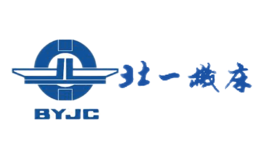
Founded in 1949, Beijing No.1 Machine Tool Co., Ltd. (BMT) is a state-owned enterprise and a leading provider of high-end, integrated CNC machine tool manufacturing and services. Headquartered in the Zhongguancun Science Park, Shunyi District, BMT encompasses several subsidiaries, including international acquisitions like Waldrich Coburg GmbH in Germany and C.B. Ferrari in Italy.
As a contemporary of the People’s Republic of China, BMT upholds the spirit of “exquisite manufacturing, pursuit of excellence,” driving continuous development through technological innovation. With a “National Recognized Enterprise Technology Center” and CNAS-certified testing and calibration laboratories, BMT has been a repeated recipient of major national science and technology projects for advanced CNC machine tools and basic manufacturing equipment.
BMT offers a wide array of products including heavy and ultra-heavy gantry milling machines, vertical lathes, CNC milling machines, CNC lathes, compound machine tools, five-axis linkage blade/wheel processing centers, grinding machines, and super precision machine tools. With capabilities in integrated automatic production lines and machine tool remanufacturing, BMT’s products serve industries such as automotive, shipbuilding, power generation, rail transport, mold-making, and machinery.
Dedicated to exceptional customer service, BMT is driven by a mission to create lasting shareholder value, earn societal respect for its employees, and deliver customer satisfaction. Striving for excellence and innovative win-win solutions, BMT is committed to becoming a globally competitive machine tool manufacturer and service provider.
7. Qiqihar No.2 Machine Tool

Founded in 1950 and now a member of the China General Technology Group, Qiqihar No. 2 Machine Tool (Group) Co., Ltd. is a renowned production base for heavy and super-heavy CNC machine tools and large complete sets of forging and pressing equipment in China. This modern industrial enterprise specializes in the production of heavy-duty and ultra-heavy-duty CNC machine tools as well as large-scale metal cutting and forming machine tools, including dedicated equipment and technical services.
Qiqihar No. 2 Machine Tool has played a pioneering role in China’s machinery industry since its relocation from Shenyang in October 1950. It has made significant contributions to national key industries such as civil aviation, shipbuilding, automotive, metallurgy, and rail transit by supplying over 2,000 major pieces of equipment to numerous domestic key enterprises, bolstering the nation’s foundational industrial development.
The company’s product range is predominantly heavy-duty, spanning metal cutting machine tools, metal forming machine tools, specialized equipment, and industrial services like large-scale machine tool modification, remanufacturing, machining, and technical consulting. Its achievements include various “firsts” in the nation’s history, such as the research and development of the first CNC milling machine in 1958, which marked the beginning of China’s CNC machine tool history.
With over 70 years of development, Qiqihar No. 2 Machine Tool has become one of the backbone enterprises in China’s heavy machinery sector, recognized for its innovation and excellence. The company boasts a skilled workforce, including many with high-level technical titles and academic degrees, and operates from a facility spanning 450,000 square meters with advanced production equipment, playing a pivotal role in enhancing China’s industrial and defense capabilities with its extensive lineup of machine tools and equipment.
8. Kunming Machine Tool
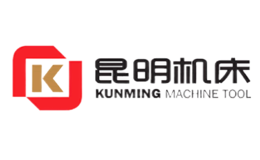
Founded in 1936 as the Central Machinery Factory and evolving into a backbone enterprise for large precision machine tools in China, Kunming Machine Tool Co., Ltd., a subsidiary of China General Technology Group, stands at the forefront of manufacturing and sales for a wide array of products. The company’s prestigious history is highlighted by numerous milestones, including the creation of China’s first horizontal boring machine in 1945 and the first coordinate boring machine in 1958.
Located at No. 23, Ciba Road, Kunming, Yunnan Province, with a postal code of 650203, the company occupies an area of 264,000 square meters, with a built area of 140,000 square meters. With total assets of 1.3 billion yuan and a dedicated workforce of 940 employees, the company’s main business revolves around the manufacturing and sales of horizontal milling and boring machines, floor-type milling and boring machines, gantry milling and boring machines, coordinate boring machines, horizontal machining centers, and machine tool components.
Kunming Machine Tool Co., Ltd. offers an extensive product line, including the KIKI Intelligent series, KITI series, KHC-AUTO series, 21 series, KHC-BLOCK series, TH65 series, 24 series, 25 series, CNC horizontal milling and boring machines, 27 series, DRO horizontal milling and boring machines, 28 series, THM/TGK series, KiMi series, CNC planer-type horizontal milling and boring machines, and more. With a focus on precision and innovation, the company continues to expand its product range, ensuring it meets the diverse needs of its customers in the evolving landscape of machine tool manufacturing.
9. BOOHI
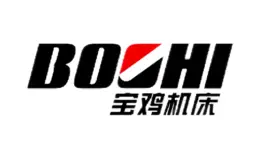
Founded in 1965, Baoji Machine Tool Group is a renowned developer and manufacturer of CNC machine tools in China. As an essential CNC machine tool R&D and intelligent manufacturing base, the company stands at the forefront of the industry with a mission to craft exceptional Chinese machine tools with ingenuity. Baoji Machine Tool Group has cultivated a management philosophy centered around intelligent guidance, dual-drive of technology and market, artisanal manufacturing, and global service.
With 12 subsidiaries and total assets of 2 billion RMB, the company’s 3,500 employees produce an annual output of 20,000 machine tools, generating revenues of 3 billion RMB and an export value of 30 million USD. The company’s leading business continuously ranks at the top of China’s machine tool industry.
Innovation-driven, Baoji Machine Tool Group has established a comprehensive R&D and manufacturing system integrating talent, technology, and brand. Its product portfolio includes 14 major categories with over 200 varieties and 400 specifications, leading with intelligent machine tools, flexible machining units, intelligent manufacturing units, and automatic production lines. These products serve various sectors, including automotive, aerospace, engineering machinery, agriculture machinery, and vocational education.
The company leverages the Shaanxi branch of the National CNC System Engineering Technology Research Center, focusing on secondary development of CNC systems and robots, as well as in-depth R&D and optimization of intelligent equipment solutions. Collaboratively developing next-generation intelligent machine tools, the company has played a pivotal role in realizing domestically produced key automobile components in China.
Committed to a talent-driven strategy, Baoji Machine Tool Group has established a multi-tiered talent development pathway, from technical experts to master craftsmen. The company has been recognized with numerous awards and honors for its commitment to quality, innovation, and integration of advanced manufacturing technologies and digital platforms. As it accelerates the transition to intelligent manufacturing, the company aims to establish a digital factory by 2024 and secure its position as a leading supplier of high-end equipment.
10. WZ
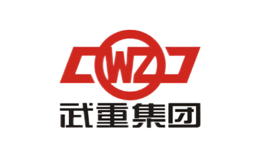
Wuhan Heavy Duty Machine Tool Group Co., Ltd., a subsidiary of China North Industries Group Corporation (NORINCO Group), is a pillar enterprise in China known for its complete range of heavy and ultra-heavy machine tools. Established as one of the key projects during China’s “First Five-Year Plan,” the company has grown to become a leading innovator, boasting over 3,000 employees and more than 600 engineering and technical staff, including national and provincial experts, chief scientists, and technology leaders.
As a key player in the industry, the company holds influential positions within the China Machine Tool & Tool Builders’ Association and has established various national and industry-level innovation platforms, including a National Enterprise Technology Center and a National Post-Doctoral Research Workstation.
After comprehensive relocation and transformation, Wuhan Heavy Duty Machine Tool Group has emerged as a leading CNC heavy and ultra-heavy machine tool R&D base with state-of-the-art processing equipment and strong manufacturing capabilities. The company’s product portfolio includes over 400 varieties across more than 50 series, encompassing heavy and ultra-heavy vertical and horizontal lathes, floor-type boring and milling machines, gantry boring and milling machines, gear hobbing machines, rotary tables, shield machines, gear drilling machines, railway equipment, and various specialized machinery. All products are fully CNC and have integrated multiple functions.
Wuhan Heavy Duty Machine Tool Group has made significant contributions to China’s equipment manufacturing industry by developing high-grade CNC machine tools with independent intellectual property rights, fulfilling the needs of national major projects. The company’s innovations have been recognized with numerous awards, and it has set and revised dozens of heavy machine tool standards, securing over 120 national patents.
Adhering to the strategic vision of strengthening core industries and expanding value and service chains, the company is committed to transforming its business models through technology and innovation. Wuhan Heavy Duty Machine Tool Group aims to become a world-class system integrator and supplier of key components in the high-end equipment manufacturing sector, driving forward the development of high-end, intelligent, and specialized equipment to achieve sustainable growth.
